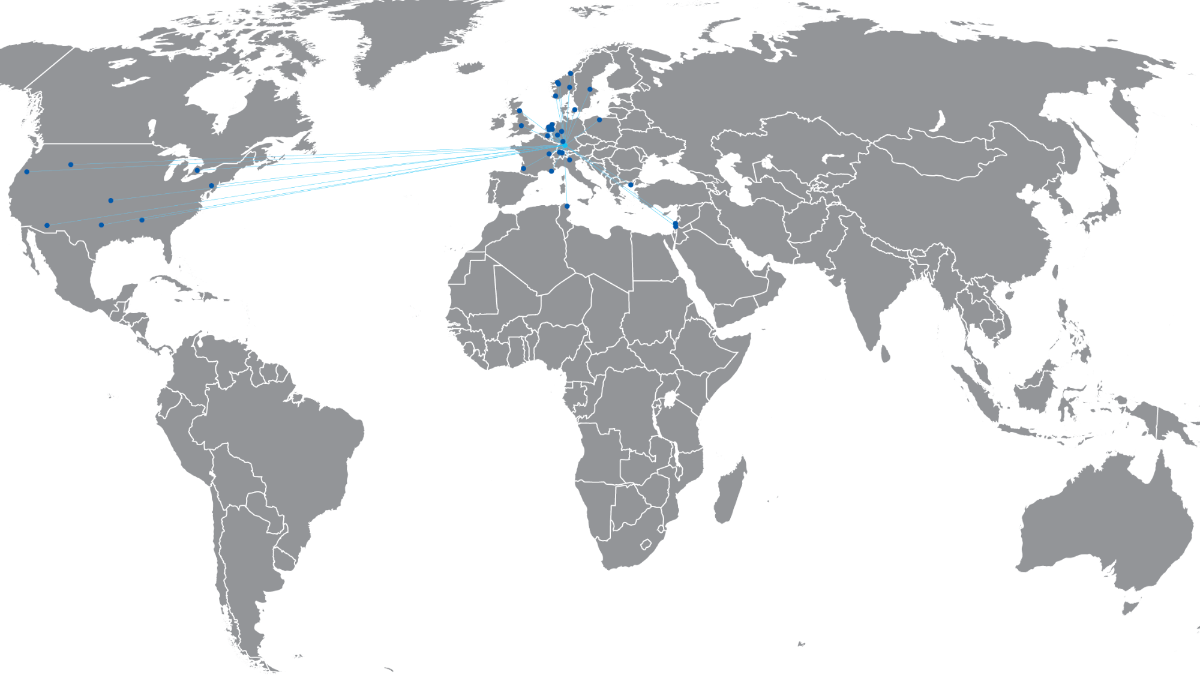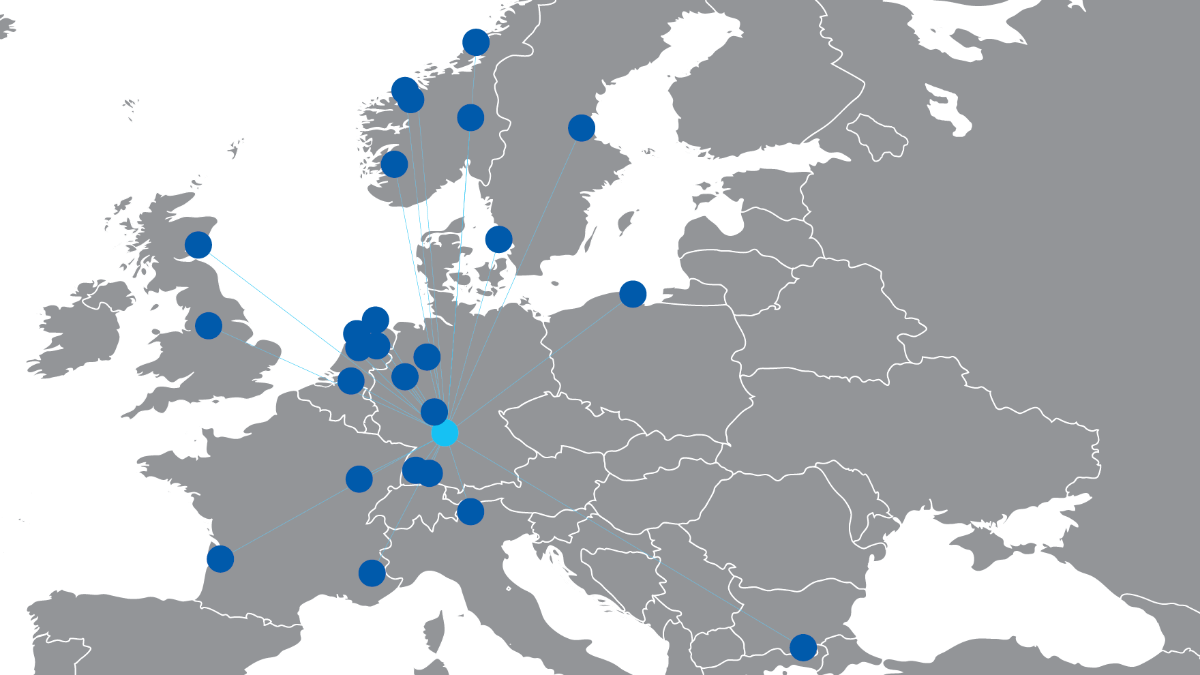International cooperation
SFB 1313 is embedded into a network of international partners and cooperations. Especially close links are established to the external partners of SFB 1313 listed below. These external partners are involved in the work of at least one of the SFB projects in a close cooperation. They also attend the status seminars, give short courses within the SFB and attend workshops.
Additionally, various cooperation agreements and connections are built within the former NUPUS framework. More information about this and the history of the cooperation can be found on the SRP NUPUS sites.
SFB 1313 frequently invites guests for short term stays at the University of Stuttgart to give talks, exchange research ideas and join discussions. More information about guests can be found here.
SFB 1313 international network
Mercator Fellows
Some of our international cooperation partners are awared a Mercator Fellowship of SFB 1313. Mercator Fellowships enable an intensive, long-term project-based collaboration between researchers from both domestic and foreign institutions. Although Mercator Fellows are on-site for only part of the project, they are associated with the project and remain in contact with the projects' team members beyond their individual research stays at SFB institutes. A list of current Mercator Fellows can be found within the list of mercator fellows.
External partners
External partners work closely with at least one project in the SFB. This list only summarieses them briefly. More information about the research can be found in the respective cooperation projects.
List of current external partners
The AO Foundation ("Arbeitsgemeinschaft für Osteosynthesefragen", a non-profit organisation) works closely with Project C03 on the experimental investigation of vertebroplasty.
Prof. Hans van Duijn is one of the Mercator Fellows and collaborates successfully with Project A05 and Project C02.
There has been a long-standing cooperation with various project leaders from Stuttgart, including joint doctoral theses and publications. Sorin Pop is a co-investigator of Project C02 close collaborator of Project A05 and one of the Mercator Fellows.
A close cooperation exists with Project B05. The external partners investigate larger-scale core samples under in-situ stress conditions the coupled treatment of flow and geomechanics by XRCT in a X-ray-transparent true-axial vessel.
Within the Center for Biofilm Engineering at MSU, there is an outstanding experimental facility of great use especially for Project C04. Additionally, Al Cunningham is one of the Mercator Fellows of SFB 1313 and accomanies the research of all project in Project Area C.
University of Bergen continuously cooperates with the SFB 1313, especially with the modelling of processes related to fracturing porous media. Florin Radu is one of the Mercator Fellows of SFB 1313 and works especially closely with Project B03.
University of Groningen cooperates with SFB 1313 on the topic of spatio-temporal (ensemble) data and learning-based visualization techniques and works closely with Project D01.
A close cooperation between the University of Manchester and SFB 1313 exists on the topic of artificial and natural
samples, that are studied together on the pore and REV scales with increased temporal resolution for fast
imaging using synchrotron facilities. An especially close cooperation exits with Project B05 and Project Z02.
Ivan Yotov is one of the Mercator Fellows and will be accompanying SFB 1313's research. Within Project A02 (in cooperation with the KTH Royal Institute of Technology), a novel mortar coupling approach was developed which guarantees flux conservation.
The external partners have a close cooperation with Project A02. They provide additional experimental set-ups in a lab for micro-fluidic porous-media processes. A particular focus of the collaboration is the development of experiments to study the coupling conditions of free flow/porous-media flow.
We collaborate on the use of XRCT measurements for the time-lapse investigation of 3D column experiments focused on salt precipitation, biofilm growth in porous media, and microbially-induced calcite precipitation, especially in Project C05.
The external partners have a close cooperation with Project Area A and the Vision Topic on Salt Precipitation.
List of former external partners
These external partners worked in close cooperation with Project A02 on detailed measurement of complex pore structures and XRCT which allow the accurate three-dimensional mapping of solid bodies.
International Network
Within SRP "NUPUS", the University of Stuttgart signed cooperation agreements with numerous national and international institutions. The aim of these agreements is to promote research cooperations with a view to contribute to the advancement of scientific research and technological development in the field of flow and transport in porous media. All these partners are invited to attend the annual status seminar of SFB 1313 and can contribute with talks and posters to promote the scientific exchange.
SFB 1313 is partner in two international research centres in Bergen (Norway):
1. VISTA Center for Modelling of Coupled Subsurface Dynamics
SFB 1313 is collaborating with the Bergen "VISTA Center for Modelling of Coupled Subsurface Dynamics", established by the Porous Media Group of the University of Bergen in 2020. SFB 1313 researchers supported the initiative and will closely work together with the research center in the future.
The research of VISTA CSD is strongly related to porous media. It will focus on getting a better understanding of deformation processes taking place in the natural underground (porous medium) as a result of subsurface fluid injection and extraction. This fundamental knowledge plays a major role in many application areas, such as groundwater management, hydrocarbon production or geothermal energy, energy storage in the underground, CO2 storage, or underground disposal of waste water. The center targets critical and fundamental research questions through mathematical and numerical modeling and data analysis.
VISTA is a basic research program financed by Equinor, an international energy company, and carried out in close cooperation with the Norwegian Academy of Science and Letters (DNVA). From the VISTA program, the center will be funded with a sum of 5 million NOK per year, an equivalent of 500.000 Euros, for a period of five years. Inga Berre, professor at the Department of Mathematics of the University of Bergen, longstanding partner of the University of Stuttgart and member of SFB 1313’s advisory board, is the head of the research center. In collaboration with DNVA, the VISTA center was launched in Bergen on 15 October 2020. The work within the center started on 1 January 2021.
2. Centre for Sustainable Subsurface Resources (CSSR)
The purpose of the “Centre for Sustainable Subsurface Resources” is the basic understanding and improved digital methods for reservoir operation. The knowledge will contribute to efficient management and research-based decisions in the sector of green and renewable energy. With the CSSR, NORCE will contribute with the development of new knowledge about how the reservoirs can be used in the green shift, to secure the energy solutions of the future.
Contact








